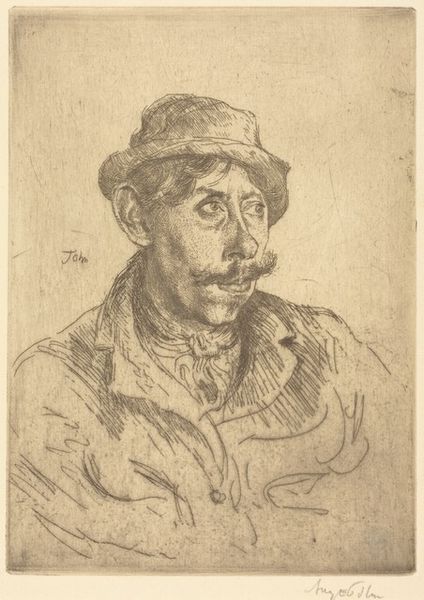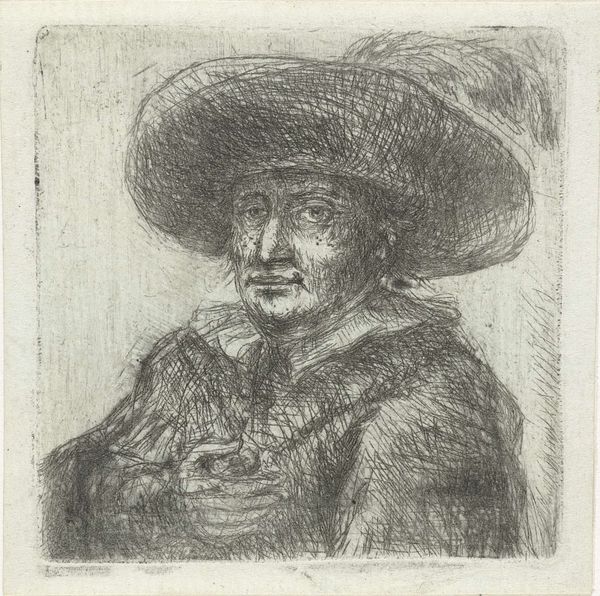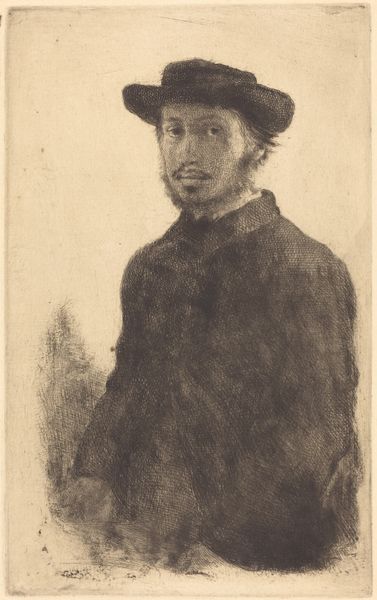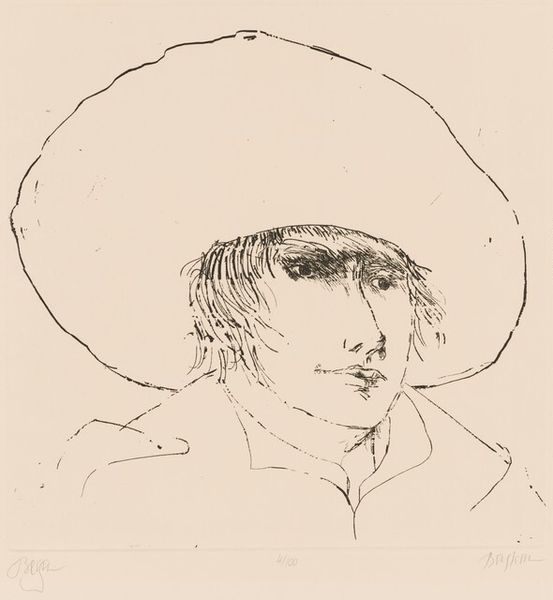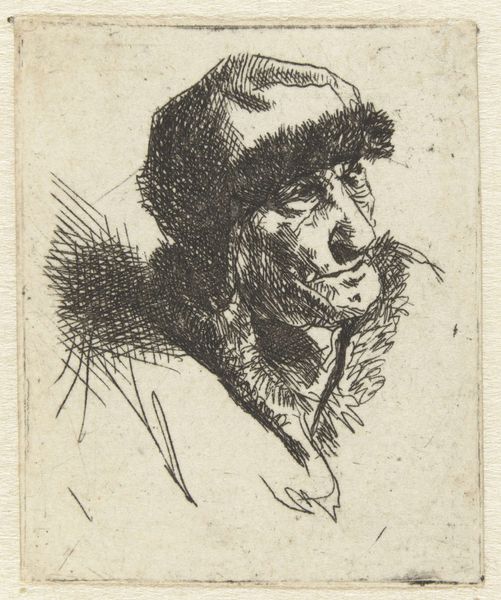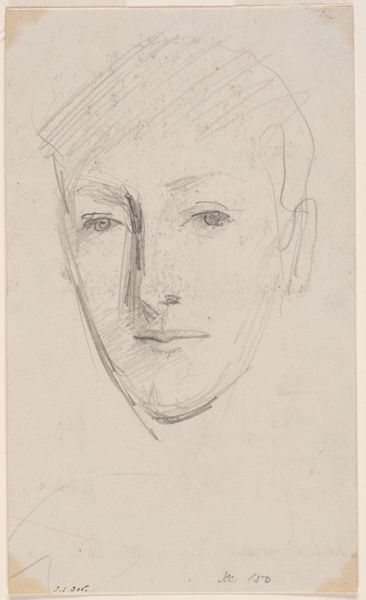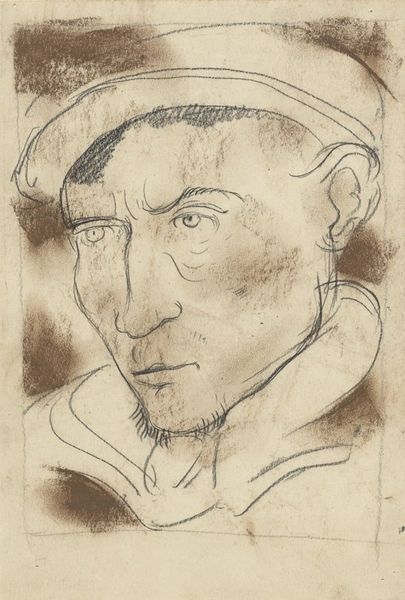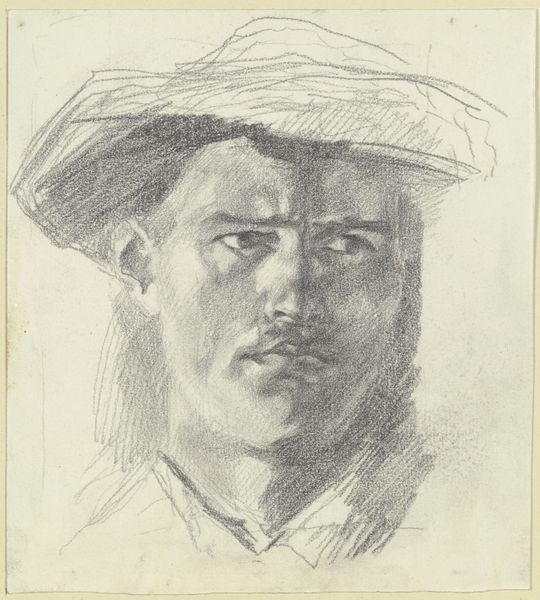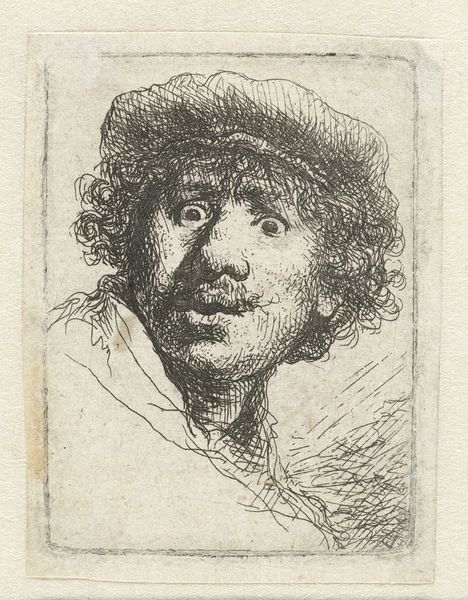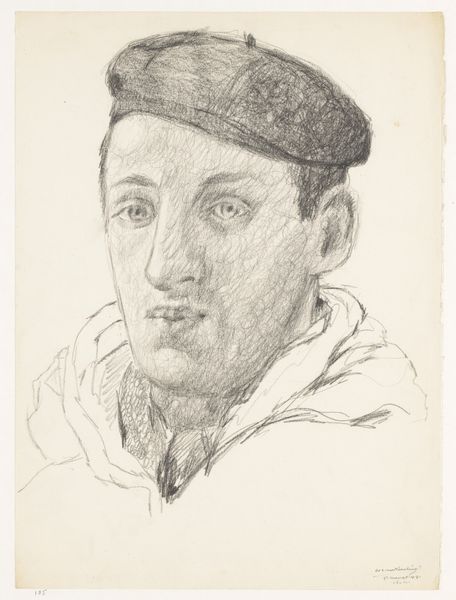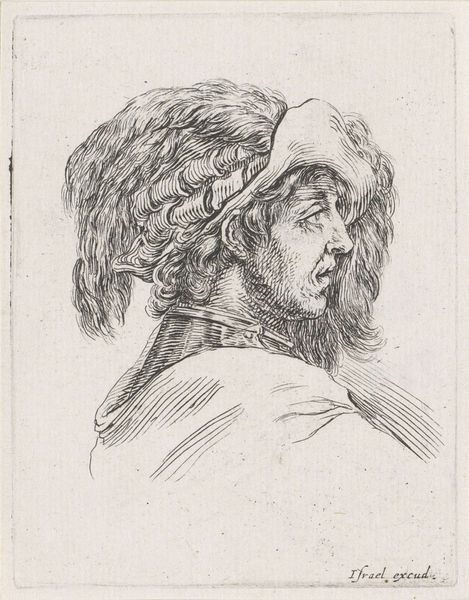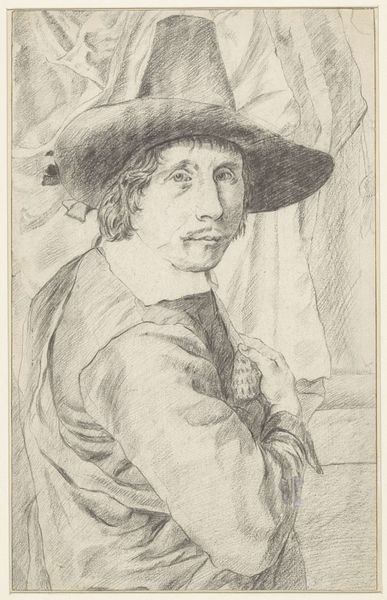
Copyright: National Gallery of Art: CC0 1.0
Curator: This print, created circa 1910 by Augustus John, is titled "Charles Felix Slade." Editor: Well, immediately, the rough texture of the lines gives it an unfinished quality, almost as if the artist captured Slade in a moment of fleeting thought. The starkness adds to this air of vulnerability. Curator: The rapid lines are very typical of etching, aren't they? The plate is covered with acid-resistant wax, then the design scratched through. The whole thing is dunked in acid, which bites into the exposed lines, and finally printed. It gives it that immediate, slightly raw feel. Editor: Absolutely. And those dense lines, particularly around the hat and the subject's left side, they create this fascinating interplay of light and shadow, don’t you think? It’s not perfectly chiaroscuro, but more like fractured highlights. Curator: Indeed. It gives the image a certain depth despite the limitations of the etching process. I'm always intrigued by portraiture during this period. Consider the influence of individuals on each other in those artistic circles, who shaped both production and consumption. Editor: Certainly, who was this Slade anyway? Was he part of John's social or artistic circle? I suspect that tells us more about why this portrait even exists, doesn’t it? Curator: A little research would suggest he was a figure in John's Bohemian orbit, connected through art and probably radical politics as well. Think of Fitzrovia back then, those crowded studios, discussions about art and the modern world... Editor: That's it, isn’t it? This portrait is a material trace of those very interactions. Almost an intimate visual note from a time and place, capturing not only a likeness, but also an aesthetic sensibility linked to radicalism. It gives it so much greater weight. Curator: Precisely. I was very aware of line, shape and form when discussing this etching, but I certainly take your point on its broader socio-historical place in John’s career. Editor: I in turn am reminded how effective a limited palette, a few skillful lines, and sharp tonal contrasts can be at capturing presence. It’s not just social commentary; it’s an affective rendering of human character.
Comments
No comments
Be the first to comment and join the conversation on the ultimate creative platform.
